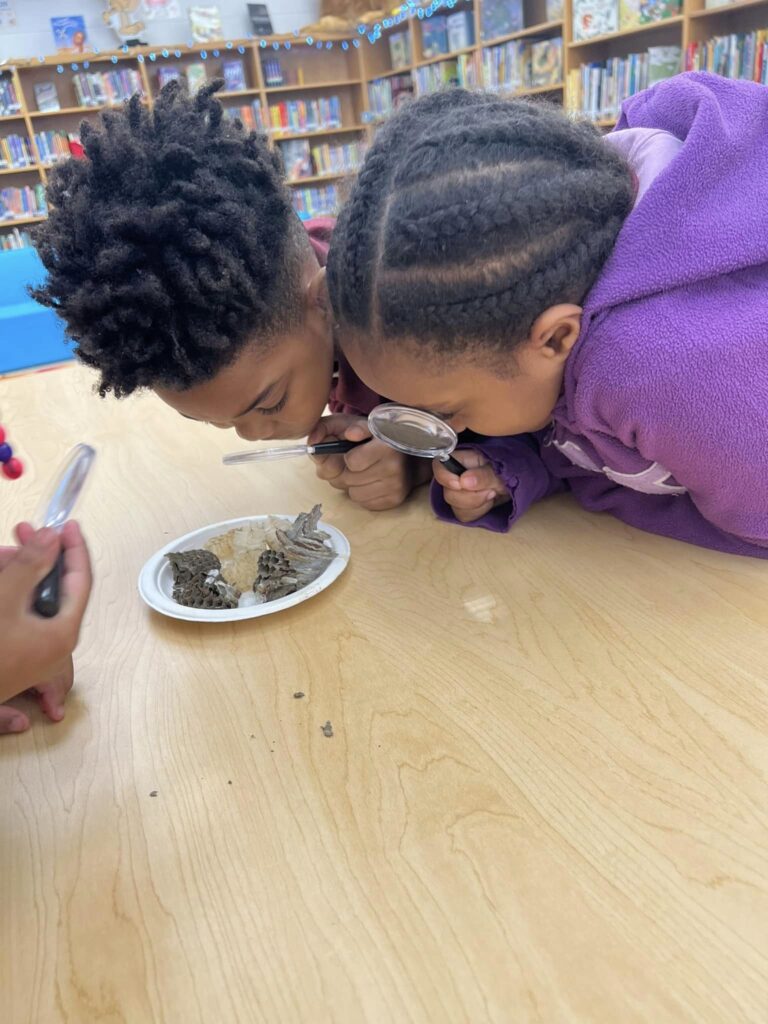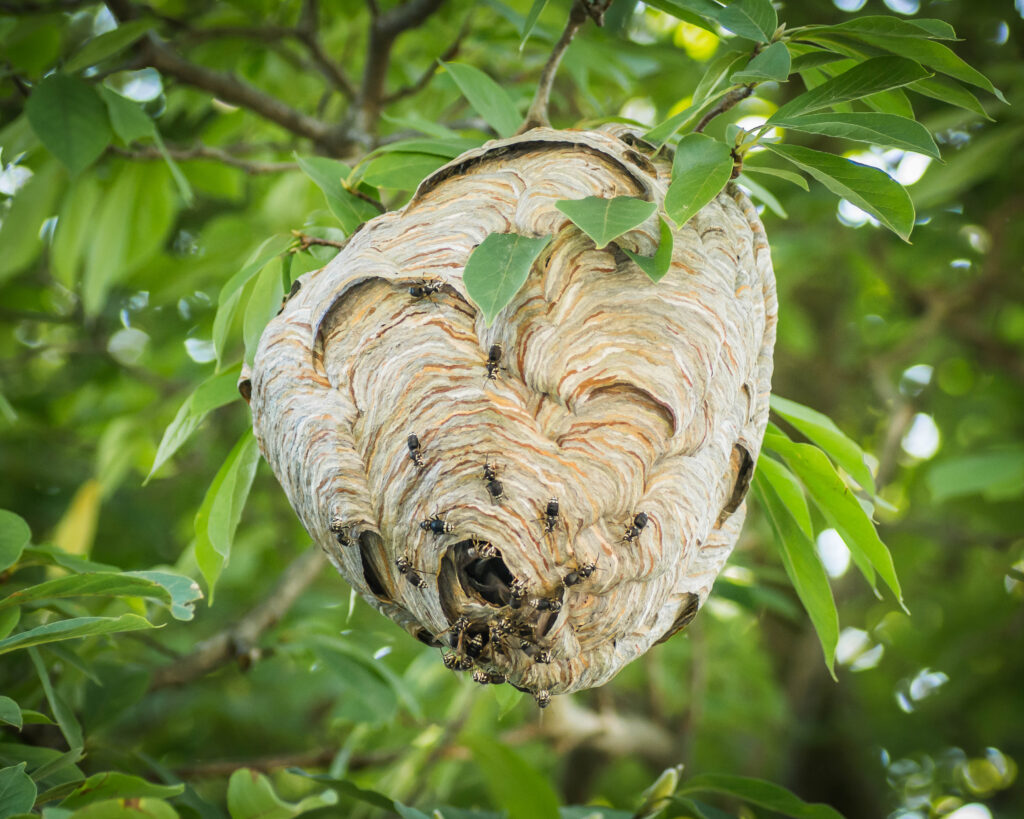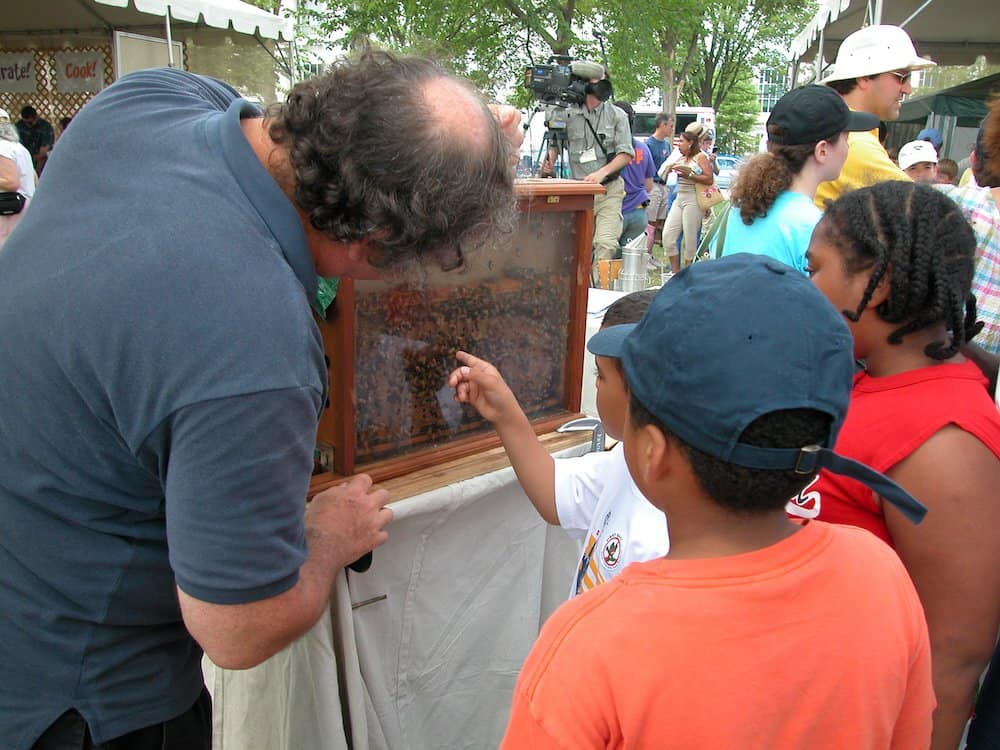by Toni Burnham
Many of us (I hope!) will be volunteering to work fairs, summer schools, and other outreach opportunities with kids this summer, and sometimes it can seem daunting. So many of us have had more screen time than recess in the past few years!
Make Your Observation Hive a Scavenger Hunt
Sometimes it helps us to pre-plan some kind of structure for the activities you plan to do with the public: it can help them, too.
When working with kids, I sometimes print out bunch of the PDF to the right (you can fit two on a 8.5"x11" page) and hand one to those who visit the observation hive. This form is based on a free blank template from Well Beings with Alysia, which you can download and edit to match other interests and activities.
Recommendation: hand these out as folks approach. It helps to give people direction when they encounter the world of honey bees. Everyone already knows about the queen, but they usually don't know how she differs from other bees, or what those others might be. One of my great articles of faith is "There is always something to see in an observation hive," so I try to include activities that kids can spot. Because I have been doing instruction on the bee family and pollination, I chose larvae over trophyllaxxis, but it was a near thing. If I ever decide to add another row, it will be there, probably with capped brood.
During classroom work, I often print these out, two to a page, and send a slip home with each kid for observational science later. At a fair or camp, however, this might not be economical (or particularly sustainable). In those cases, it is completely feasible to print out a few and laminate them, handing them to visitors and requesting them back after. You might also consider making it into a poster, and placing that near the observation hive. If you need higher resolution files in order to make a poster, please email your request to beeline@mdbeekeepers.org!
Burr Comb and Hornet Nests

Another article of faith: kids do not get to mess around with enough real-world materials, objects, phenomena, and smells. For that reason, I love to provide opportunities to paw pollinator-oriented stuff that will not survive the encounter. THE MEMORY WILL, THOUGH.
One total show stopper at in person events is the opportunity to interact with real hornet nests, and to compare them to wax comb.
Another truism: the average citizen calls everything a "bee," and does not get why we make such a big deal out of "no, it's not!" Giving them physical experience of major differences can change their world.
Materials: It helps to have a complete, not-yet-messed with hornet nest on display, and to have bits and pieces of one that you will sacrifice to the event. Bring some of that burr comb or culled frames that you saved, and if you have some magnifying glasses (even super cheap ones) so much the better.
I place bits of comb and bits of hornet paper on comb on paper plates, with a magnifying glass if possible, and invite kids to compare colors and textures and to crush and sniff and (in the case of the hornets) often look for dead former residents. Once a kid has squished wax and torn paper, they are ready to consider other ways in which these insects differ. PLUS most of these materials are free to us.

Though we are at events to discuss honey bees, there are some details you might be interested in mentioning (or just knowing yourself) if you use a hornet nest dissection and destruction! While honey bees produce the wax with which they build in their bodies, hornets have to find and obtain wood pieces in the environment. Wax comb is used inside a protected space, and it changes color based on how honey bees use it over time. Hornet "paper" is outside, in the elements, and its colors come from the different sources of fiber which the hornets find. They locate dry splinters, peel them one by one, chew them into mush, and then go home and lay down a strip of mush (like paint) next to ones made by their sisters. Every color is another source, often another plant entirely. This is en enormous amount of work, and all those colors mean that the environment is a diverse and amazing place. Maybe they want to guess where each color came from!

[Return to June 2024 BeeLine newsletter]


